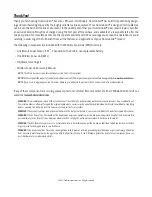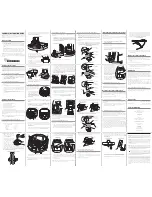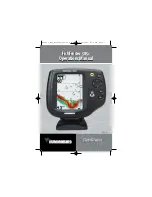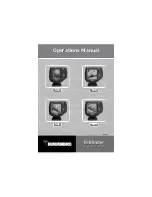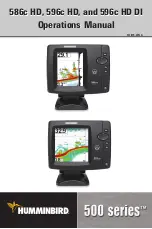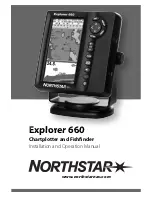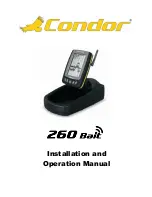
Attaching the RSS
The line coming from your reel can be tied off to the front hole in the Remote Sonar Sensor (RSS). If you wish to also use
the RSS as a conventional float, use the second hole to attach your hook using a lighter weight line. A snag will break the
lighter line if you have to break free. Slip line techniques are not recommended because of the higher risk of losing the RSS.
If you do use the slip line method, use a lighter weight line after the lower stop, enabling retrieval of the RSS if the lower
line with hook breaks away.
CAUTION:
You will increase the possibility of breaking your line if you use light test pound line on your reel. The RSS is positively buoyant (is
buoyant under its own weight plus 0.2 ounces or 5.7 g of bait and lead weight.) The maximum amount of weight for any attachment to
the RSS is approximately
¹²₆₄
to
¹³₆₄
ounces (5.3 g to 5.8 g), and includes the combined weight of any hook, line, weight, swivel/snap swivel
and bait that is attached to the RSS. The RSS itself weighs 1 ounce (28 g), and therefore light test line might break.
RSS Power and Battery Life
The Remote Sonar Sensor (RSS) has a separate, non-replaceable lithium battery that has a shelf life of three years and will
last for approximately 400 hours of in-water use. Discard the used RSS in compliance with local laws as you would any elec-
tronic component or battery.
The RSS has contacts that perceive when the device is immersed in the water. These contacts turn on the Sonar
Transmitter/Receiver and begin transmitting the sonar information via RF to the WSL. The RSS automatically stops using power
a few seconds after being pulled out of the water.
WARNING!
Store the RSS in a dry, non-metallic container, such as a tackle box, in a separate compartment, and isolated from any metallic
devices when not in use to conserve power. Never place the RSS in a wet area of a boat or on a metal surface when not in use as this could
turn it on and shorten its usable life.
NOTE:
If the RSS was used in salt water, rinse it with fresh water before storing it.
Use a heavy test line, standard knots, and tack-
le such as a swivel.
Handle the RSS by the antenna tower
when it has been in water.
The second leader hole is for using the RSS as a float. Connect a lighter
weight hook line to this hole. Do not over-weight the hook line as this will
submerge the RSS, causing signal loss.

